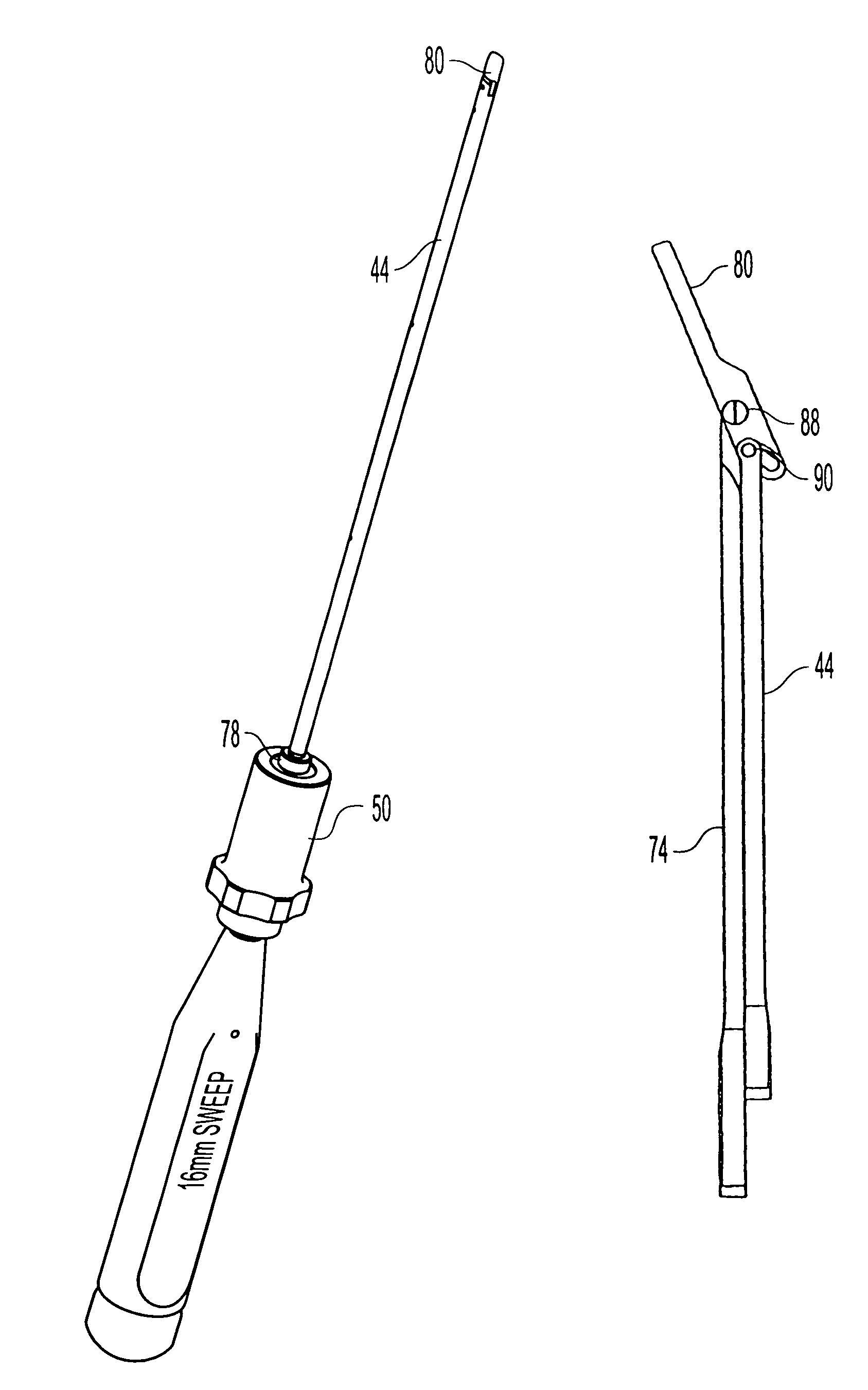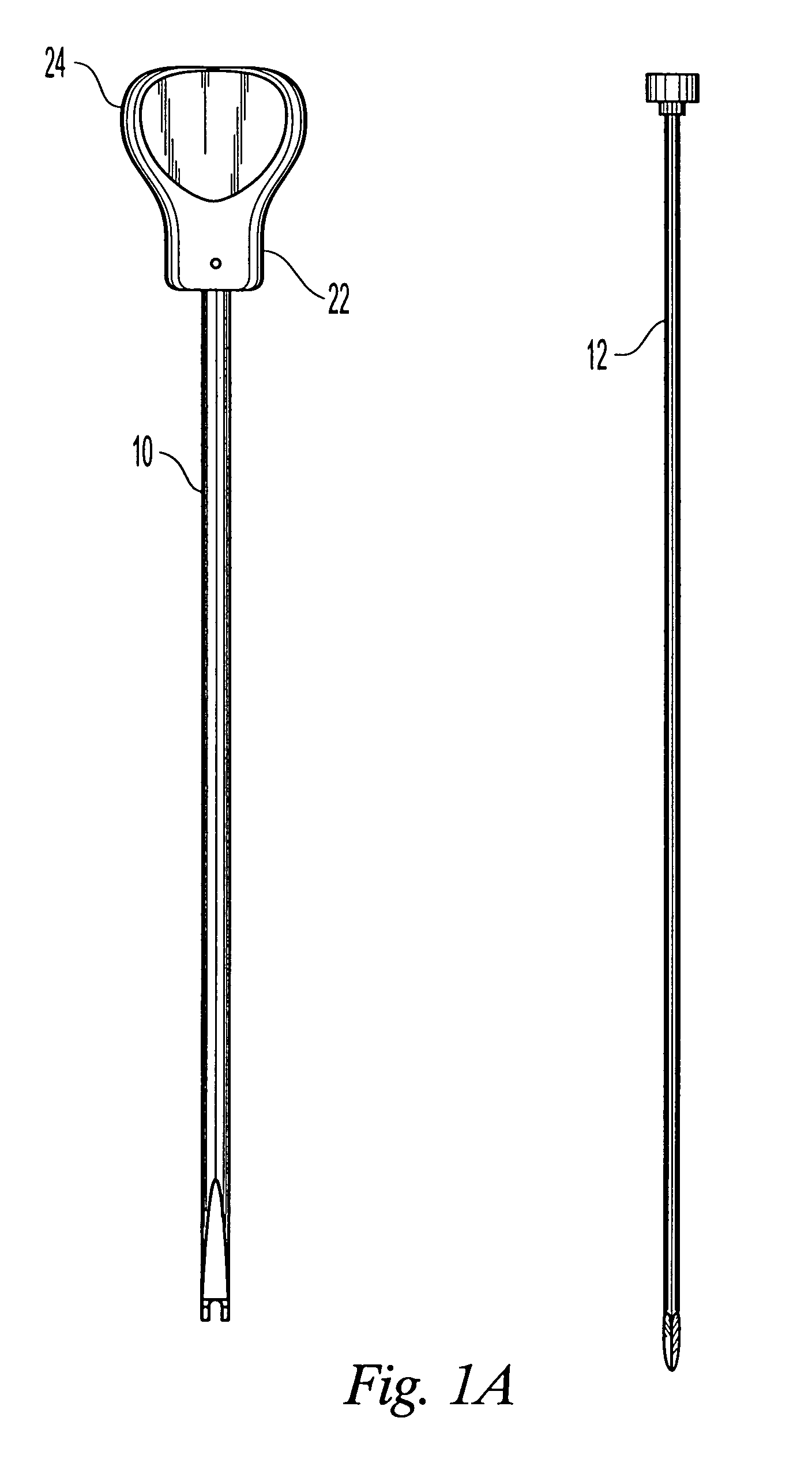Tools and methods for creating cavities in bone
a technology of tools and methods, applied in the field of tools and procedures, to achieve the effect of reducing fractures, compacting the tissue, and small diameter
- Summary
- Abstract
- Description
- Claims
- Application Information
AI Technical Summary
Benefits of technology
Problems solved by technology
Method used
Image
Examples
Embodiment Construction
[0083]The present invention is directed to tools and methods for creating cavities in bone. The creation of cavities in bone may be beneficial when bone filler material is to be introduced to the interior of the bone. One advantage is that the creation of a cavity may be used to restrict, contain, or control the delivery of the bone filler material. Another advantage is that the cavity enables the flow and placement of filler material to a desired region.
[0084]A combination of the tools described herein may be provided to a physician as a cavity creation system. In one embodiment, the combination of tools are provided in kits according to stages of the procedure in which the tools will be used. For instance, one combination of tools may be selected for a cavity creation approach kit. The cavity creation kit may include, for example, probes, cannulas, and displacement rods. These tools, which are described in greater detail below, can be used to provide access to the treated area.
[00...
PUM
 Login to View More
Login to View More Abstract
Description
Claims
Application Information
 Login to View More
Login to View More - R&D
- Intellectual Property
- Life Sciences
- Materials
- Tech Scout
- Unparalleled Data Quality
- Higher Quality Content
- 60% Fewer Hallucinations
Browse by: Latest US Patents, China's latest patents, Technical Efficacy Thesaurus, Application Domain, Technology Topic, Popular Technical Reports.
© 2025 PatSnap. All rights reserved.Legal|Privacy policy|Modern Slavery Act Transparency Statement|Sitemap|About US| Contact US: help@patsnap.com



